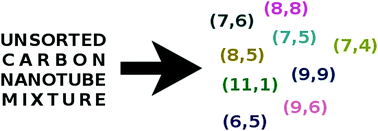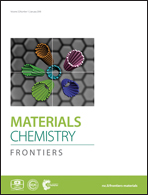Towards monochiral carbon nanotubes: a review of progress in the sorting of single-walled carbon nanotubes
Abstract
The discovery of carbon nanotubes (CNTs) revealed that this new form of carbon can challenge traditional materials on many fronts. Remarkable electrical, thermal, mechanical and optical properties of individual CNTs have attracted significant attention, and so scientists have begun to consider their implementation in everyday life. Unfortunately, CNT aggregates are composed of a wide range of CNT types, which has a strongly negative influence on the observed performance of macroscale devices made from them. Recently, however, it has become evident that different CNT types can be sorted according to length, diameter, electrical character, chiral angle and even handedness, which reignited interest in them. This review aims to demonstrate the state-of-the-art of all the mainstream methods of sorting CNTs (preferential synthesis, selective destruction, (di)electrophoresis, ultracentrifugation, chromatography, (co)polymer isolation and aqueous two-phase extraction). It is concluded with an overview of already tested applications using sorted CNTs and gives an overlook of the field for the future.

- This article is part of the themed collection: 2018 Materials Chemistry Frontiers Review-type Articles


 Please wait while we load your content...
Please wait while we load your content...